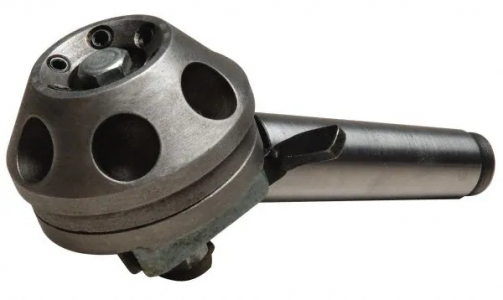- Joined
- Oct 31, 2016
- Messages
- 2,645
We can go round and round on this. In the end riversidedan has to make the decision on what will meet his needs. When I get into one of these situations I find writing out a statement of requirements (SOR) really helps the decision process. The SOR will help differentiate between the must have versus the would be nice.
QCTP are great but are not the one size fits all solution to every project. If you are going to be performing the same 3 or 4 operations on a part over and over again swapping out tool holders on a QCTP will soon get to be a drag. Think about making a part that requires 4 different operations. That's 4 tool holder changes. No biggy if you are only making one or two. But what if you are making a 100. That would be 400 tool holder changes. This is where a 4 way would shine. Or maybe a 3 way or a 6 way. I am finding that I do the same 3 operations on most projects. Turning/facing/chamfer, threading and parting off. This holds true for either internal or external. So if I had two 4 ways with one set up for external work and one for internal these two tool holders would satisfy virtually all of my needs. I am currently working on redesigning the post on my QCTP to make a 4 way work on a QCTP.
Although a bigger lathe is not necessarily always better a longer bed is. I would buy the longer bed every time. Bed length can be equated to quill travel on a round column mill drill. We are always fighting trying to cram different tooling into a limited amount of space. The same thing happens on a lathe with a short bed. You run out of room and ideas pretty quickly with the short bed.
QCTP are great but are not the one size fits all solution to every project. If you are going to be performing the same 3 or 4 operations on a part over and over again swapping out tool holders on a QCTP will soon get to be a drag. Think about making a part that requires 4 different operations. That's 4 tool holder changes. No biggy if you are only making one or two. But what if you are making a 100. That would be 400 tool holder changes. This is where a 4 way would shine. Or maybe a 3 way or a 6 way. I am finding that I do the same 3 operations on most projects. Turning/facing/chamfer, threading and parting off. This holds true for either internal or external. So if I had two 4 ways with one set up for external work and one for internal these two tool holders would satisfy virtually all of my needs. I am currently working on redesigning the post on my QCTP to make a 4 way work on a QCTP.
Although a bigger lathe is not necessarily always better a longer bed is. I would buy the longer bed every time. Bed length can be equated to quill travel on a round column mill drill. We are always fighting trying to cram different tooling into a limited amount of space. The same thing happens on a lathe with a short bed. You run out of room and ideas pretty quickly with the short bed.


